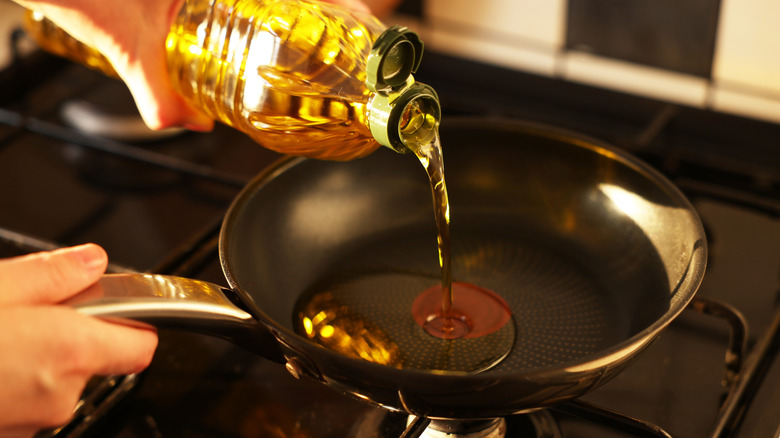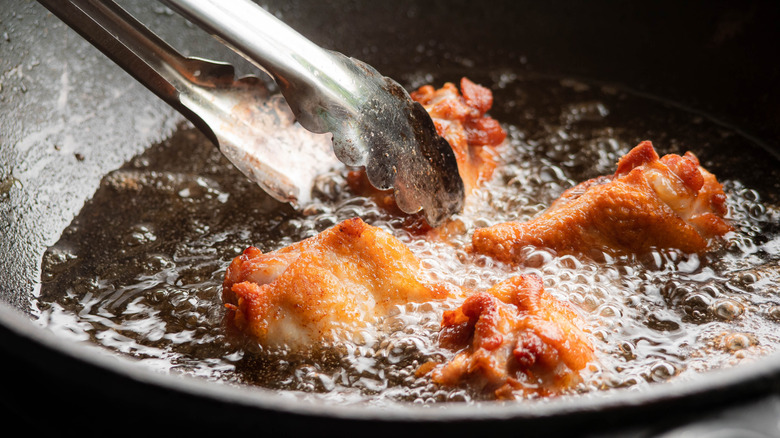Are Pan-Frying And Shallow-Frying The Same Thing?
Whether you're using a deep fryer, a stock pot, or just a sauce pan, there are many ways to fry up your food. However, there might be some question as to the exact differences between certain methods. For example, pan-frying and shallow-frying may seem like interchangeable terms, but this is simply not the case. Though they are similar, there are a few key differences between the frying methods.
Pan-frying requires a minimal amount of oil, just enough to cover your cooking surface. This is usually done to produce a seared, browned exterior, and is often followed by a secondary cook in the oven. Proteins, such as steak, are often pan-fried (or pan seared), for example. Shallow-frying requires more oil, enough to cover half of whatever you are frying. For both methods you should cook on both sides, and turn half way through.
Shallow-frying is often done in the place of deep frying for those who either lack the proper equipment, or simply don't want to use as much oil as deep-frying. This method works best for foods such as fried chicken cutlets (fry in olive oil and butter for Carbone-style chicken parm), which should be fried all the way through.
Cooking in the shallow, keeping it in the pan
Regardless of which frying method you use, there is some general guidance on frying up your foods in an efficient and safe way. To fry vegetables, for example, you should keep the oil at 375 degrees Fahrenheit. Meat, on the other hand, usually fires at a lower temperature, around 340 degrees Fahrenheit. For shallow-frying, you will want to use an oil such as canola, which has a neutral taste and high smoke point, though other oils also work for shallow frying. Additionally, it is important to keep in mind that your oil's temperature will dip a few degrees when food is added, so adjust the temperature as needed.
It's also important to note that the exact amount of oil used for pan-frying and shallow-frying varies, so be sure to check your recipe to confirm the amount of oil needed. Additionally, some people recommend filling your pan a third of the way full to pan-fry, rather than simply covering the bottom of the pan. However, this might push your fry method into shallow-fry territory, so be sure to check your recipe's exact instructions before going forward.

